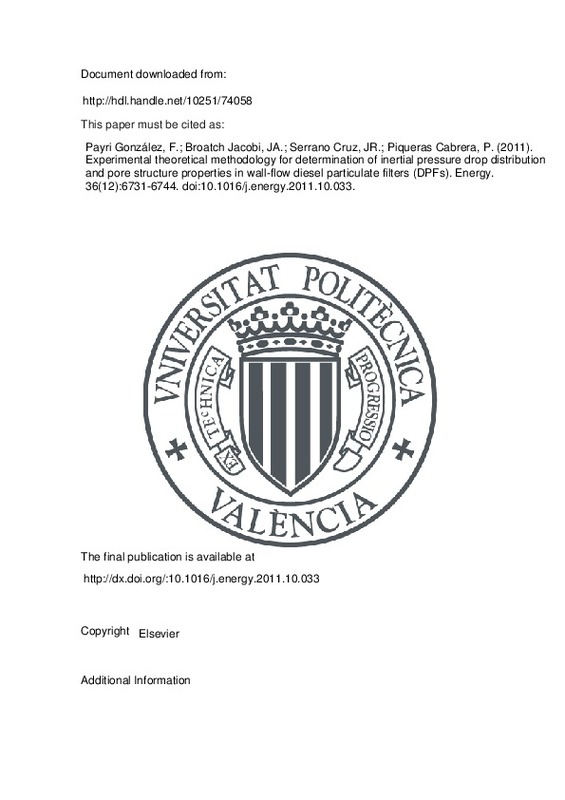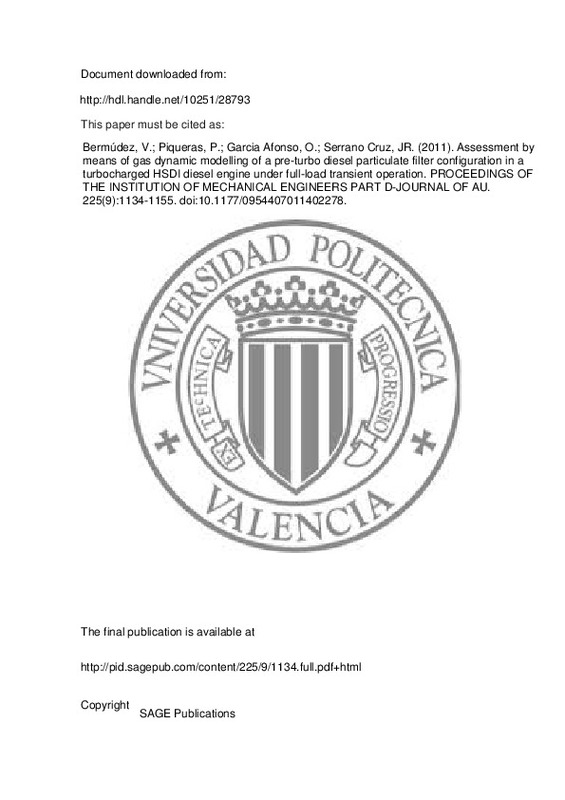Payri González, F.; Broatch Jacobi, JA.; Serrano Cruz, JR.; Piqueras Cabrera, P. (2011). Experimental theoretical methodology for determination of inertial pressure drop distribution and pore structure properties in wall-flow diesel particulate filters (DPFs). Energy. 36(12):6731-6744. https://doi.org/10.1016/j.energy.2011.10.033
Por favor, use este identificador para citar o enlazar este ítem: http://hdl.handle.net/10251/74058
|
Título:
|
Experimental theoretical methodology for determination of inertial pressure drop distribution and pore structure properties in wall-flow diesel particulate filters (DPFs)
|
|
Autor:
|
 Payri González, Francisco
Payri González, Francisco

 Broatch Jacobi, Jaime Alberto
Broatch Jacobi, Jaime Alberto

 Serrano Cruz, José Ramón
Serrano Cruz, José Ramón

 Piqueras Cabrera, Pedro
Piqueras Cabrera, Pedro
|
|
Entidad UPV:
|
Universitat Politècnica de València. Escuela Técnica Superior de Ingeniería del Diseño - Escola Tècnica Superior d'Enginyeria del Disseny
|
|
Fecha difusión:
|
|
|
Resumen:
|
Wall-flow particulate filters have been placed as a standard technology for Diesel engines because of the increasing restrictions to soot emissions. The inclusion of this system within the exhaust line requires the development ...[+]
Wall-flow particulate filters have been placed as a standard technology for Diesel engines because of the increasing restrictions to soot emissions. The inclusion of this system within the exhaust line requires the development of computational tools to properly simulate its flow dynamics and acoustics behaviour. These aspects become the key to understand the influence on engine performance and driveability as a function of the filter placement. Since the pressure drop and the filtration process are strongly depending on the pore structure properties - permeability, porosity and pore size - a reliable definition of these characteristics is essential for model development. In this work a methodology is proposed to determine such properties based on the combination of the pressure drop rement in a steady flow test rig and two theoretical approaches. The later are a lumped model and a one-dimensional (1D) unsteady compressible flow model. The purpose is to simplify the integration of particulate filters into the global engine modelling and development processes avoiding the need to resort to specific and expensive characterisation tests. The proposed methodology was validated against measurements of the response of an uncoated diesel particulate filter (DPF) under different flow conditions as cold steady flow, impulsive flow and hot pulsating flow. © 2011 Elsevier Ltd.
[-]
|
|
Palabras clave:
|
Diesel particulate filter
,
Experiments
,
Gas dynamics
,
Permeability
,
Porous media
,
Slip-flow
,
Computational tools
,
Development process
,
Diesel particulate filters
,
Driveability
,
Drop distribution
,
Engine modelling
,
Engine performance
,
Filtration process
,
Flow condition
,
Flow dynamics
,
Impulsive flow
,
Inertial pressure
,
Lumped models
,
Model development
,
Particulate filters
,
Porosity and pore size
,
Pulsating flow
,
Soot emissions
,
Standard technology
,
Steady flow test
,
Structure property
,
Theoretical approach
,
Unsteady compressible flow
,
Air filters
,
Dynamics
,
Fuel filters
,
Gas permeability
,
Machine design
,
Mechanical permeability
,
Pore structure
,
Porous materials
,
Pressure drop
,
Steady flow
,
Wall flow
,
Diesel engines
,
Acoustics
,
Diesel engine
,
Experimental study
,
Filter
,
Filtration
,
Flow modeling
,
Gas flow
,
Model validation
,
Particulate matter
,
Porosity
,
Soot
,
Theoretical study
|
|
Derechos de uso:
|
Reserva de todos los derechos
|
|
Fuente:
|
Energy. (issn:
0360-5442
)
|
|
DOI:
|
10.1016/j.energy.2011.10.033
|
|
Editorial:
|
Elsevier
|
|
Versión del editor:
|
http://dx.doi.org/:10.1016/j.energy.2011.10.033
|
|
Código del Proyecto:
|
info:eu-repo/grantAgreement/MICINN//DPI2010-20891-C02-02/ES/ELABORACION DE MODELOS TERMOFLUIDODINAMICOS Y TECNICAS EXPERIMENTALES PARA DESARROLLAR UN COLECTOR DE ESCAPE MULTIFUNCIONAL CON UN FILTRO DE PARTICULAS DIESEL INTEGRADO/
|
|
Agradecimientos:
|
This work has been partially supported by the Spanish Ministerio de Ciencia e Innovacion through grant number DPI2010-20891-C02-02.
|
|
Tipo:
|
Artículo
|







![[Cerrado]](/themes/UPV/images/candado.png)




